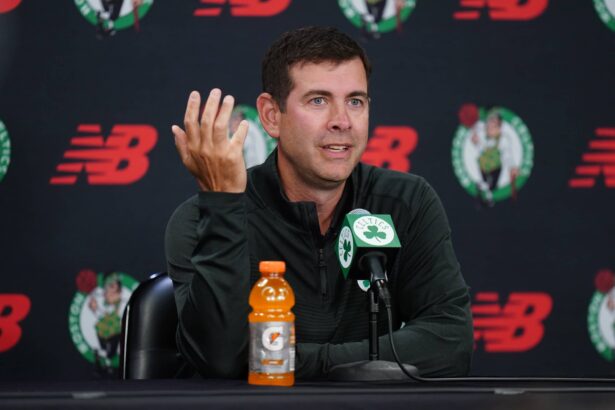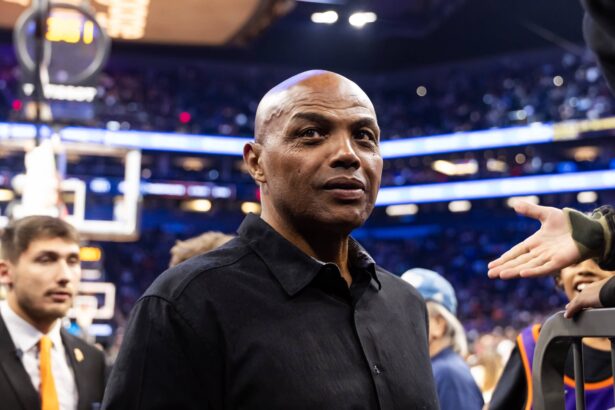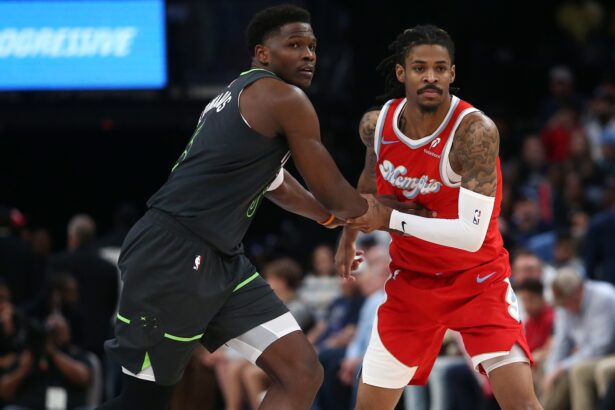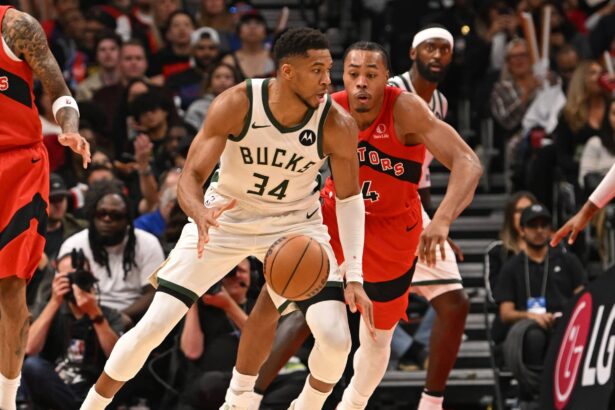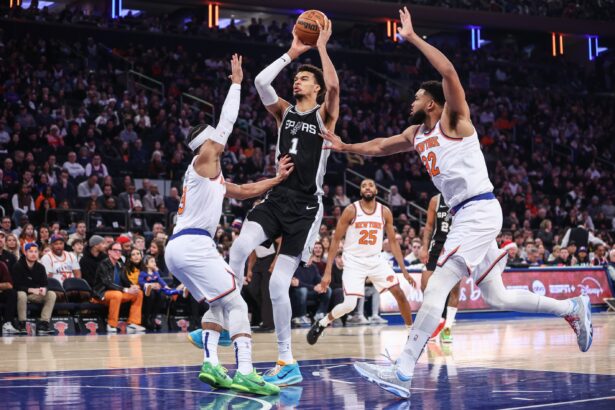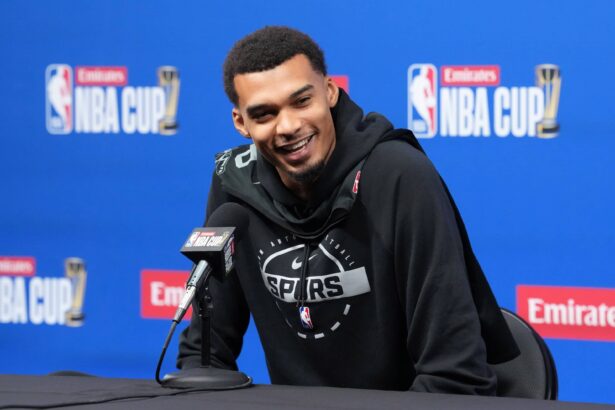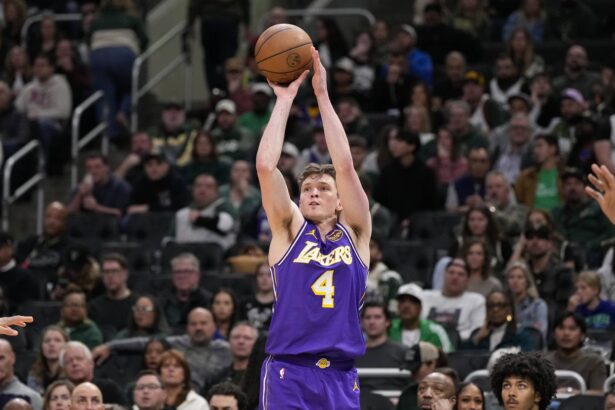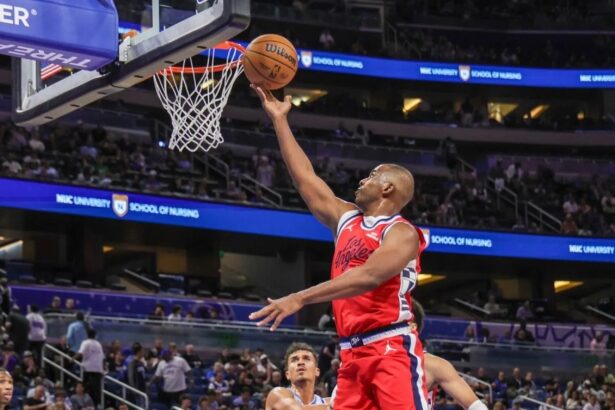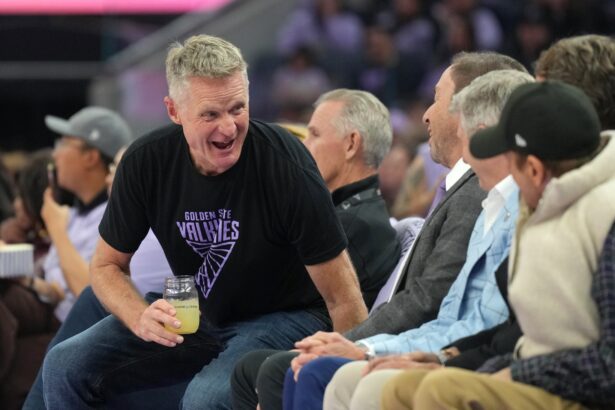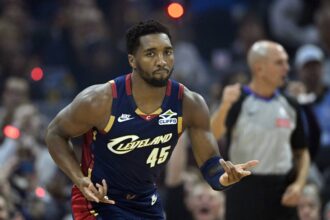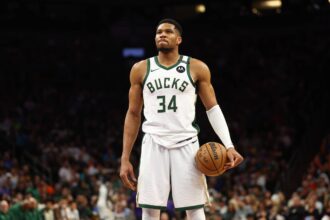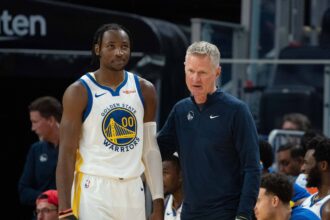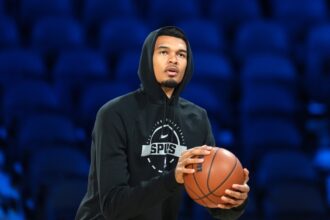Anthony Edwards is off to a phenomenal start to the 2024-25 NBA season, showcasing a career-high scoring average of 28.4 points per game, along with 5.2 rebounds and 3.6 assists. His efficiency has been impressive, shooting 46.8% from the field and 42.4% from beyond the arc. The Minnesota Timberwolves star has also set a historic mark, becoming the youngest player in NBA history to reach 850 career three-pointers.
Despite these accolades, not everyone is convinced that Edwards’ new approach to increasing his three-point attempts is the best direction for his game. Former NBA star Gilbert Arenas has been vocal in his criticism, raising questions about the sustainability and long-term impact of Edwards’ evolving style.
“I don’t get the thought process sometimes like they’re going under because they’re trying to beat you to the basket.”
“I think he needs to look at the game on what they’re doing and understand that just because someone sags off doesn’t mean take that open shot.”
“I don’t want to guard you. I can’t guard you You doubled your three-point attempts, but you’re only averaging two more points. If you’re shooting more threes, that means you’re not getting to the free throw line.”
“You’re taking away from something that was guaranteed before. So if you’ll still shooting the same amount of free throws, then doubling your threes you will be averaging about 30, 31 but you’re only averaging two more points taking five to six more threes.”
“So that means you’re taking away from something. So I don’t even have to look at what you’re taking away but if you’re taking that many more shots either you’re shooting percentages down or you’re you’re not shooting as many free throws as you used to.”
Edwards has made a noticeable adjustment this season by significantly increasing his three-point volume, averaging 11.6 attempts per game compared to 6.7 last season. This sharp uptick has come at the expense of his two-point attempts, which have dropped from 13.0 to 9.9 per game.
Similarly, his free-throw attempts have declined from 6.4 to 4.5 per game, indicating a reduced focus on attacking the basket and drawing fouls. While Edwards’ improved three-point efficiency—now at an impressive 42.4%—has added a new dimension to his game, Arenas believes this shift could limit his overall scoring potential.
The criticism comes amidst a transitional period for the Timberwolves, who made significant roster changes during the offseason. Trading Karl-Anthony Towns for Julius Randle shifted some of the offensive responsibilities onto Edwards, prompting him to expand his scoring repertoire.
While Arenas’ concerns about a potential imbalance in Edwards’ game are valid, the numbers so far suggest that the increased three-point attempts are working in Edwards’ favor. His 64 made threes through 13 games rank as the third-highest total in NBA history for this stage of the season, trailing only Stephen Curry’s historic runs in 2015-16 and 2021-22.
The Timberwolves, however, are still finding their footing, currently holding a 7-6 record. While Edwards’ stellar play has been a bright spot, the team’s overall chemistry and offensive flow remain a work in progress. Whether Edwards’ reliance on three-point shooting will eventually hinder his effectiveness or serve as a long-term asset will depend on his ability to balance his perimeter game with his natural driving ability.
For now, Edwards has silenced most critics with his impressive start. Yet, the debate surrounding his approach highlights the ongoing tension between adapting to modern NBA trends and staying true to one’s foundational strengths. Only time will tell if Edwards can strike the right balance and take his game—and the Timberwolves—to new heights.
Thank you for being a valued reader of Fadeaway World. If you liked this article, please consider following us on Google News. We really appreciate your support.






